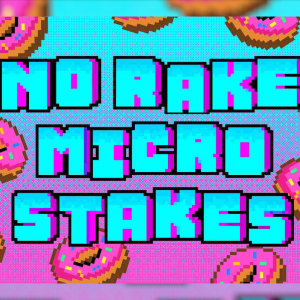How to Win at Poker Consistently: Guide for Cash Games & Tournaments
19 hours ago

30 Oct
Consistent poker profitability requires the systematic implementation of a strategy across multiple skill domains, rather than relying solely on card luck. Players who focus on high-level fundamentals tend to generate superior results compared to those pursuing advanced concepts without first mastering core principles.
Core Strategic Pillars
Winning poker strategy rests on three foundational concepts that influence every decision across all game formats and stakes.
Position Awareness
Position represents the most powerful advantage in poker, dictating range construction and strategic options. Late position players act with complete information about earlier actions, enabling superior decision-making.
Opening ranges expand dramatically from early to late position. Under-the-gun opens typically include 15-18 percent of hands, while button opens reach 45-50 percent.
Preflop Discipline
Preflop mistakes compound throughout hands, making tight opening standards essential. Playing too many hands from early position or cold-calling raises with weak holdings creates difficult post-flop situations.
Strong players fold approximately 70-75 percent of hands dealt, concentrating action on situations offering genuine profit potential.
Controlled Aggression
Aggression drives poker profitability by creating two winning paths: opponents fold or pay premium prices to continue. Passive play generates a single winning method through showdown.
Betting and raising forces opponents into difficult decisions while building pots with strong hands and providing fold equity with weaker holdings.
High-Impact Beginner Improvements
Several strategic adjustments produce disproportionate results relative to implementation difficulty, making them priority improvements for developing players.
Stop Limping
Limping represents the single most costly beginner mistake. Open-limping from early or middle position telegraphs weakness, invites multiway pots with poor position, and surrenders initiative.
Elimination of limping alone improves win rates by 2-5 big blinds per 100 hands.
Reduce Bluff Frequency
Beginning players bluff excessively, particularly on rivers where opponents rarely fold medium-strength hands. Reduce bluffing frequency by 50 percent from instinctive levels.
Against recreational opponents who call too frequently, bluffing becomes even less profitable.
Increase Continuation Bet Sizing
Small continuation bets, which are 25-33 percent of the pot, allow opponents to realize equity at a low cost. Increase standard continuation bets to 50-66 percent pot, generating better fold equity and building larger pots.
Practical Preflop Charts
Memorizable preflop guidelines enable consistent execution without requiring perfect recall of complex range matrices.
Simplified Opening Ranges
Early position openings include pocket pairs (77+, AQ+, KQ suited). Middle position expands to 66+, AJ+, KJ+ suited, QJ suited. Late position incorporates 55+, A9+, K9+, all Broadway, suited connectors down to 76s.
These simplified ranges sacrifice minor theoretical optimality for practical implementability.
Three-Bet Guidelines
Three-bet for value with JJ+, AK from all positions. Add light three-bets from late position using suited connectors and weak suited aces. Three-betting frequency should approximate 8-12 percent.
Against tight opponents who fold excessively to three-bets, increase light three-betting.
Postflop Decision Framework
Systematic postflop analysis incorporates four key considerations guiding action selection across all board textures and positions.
Range Advantage Assessment
Range advantage refers to which player holds stronger hands on specific board textures. The preflop raiser typically maintains range advantage on high-card boards, while defenders hold advantage on connected, low-card textures.
Players with range advantage should bet frequently with merged ranges.
Nut Advantage Evaluation
The nut advantage refers to the player who can hold the strongest hand on a given board. On ace-high boards, the preflop raiser has a significant nut advantage.
Players with a nut advantage can apply more pressure through larger bets.
Equity Calculation
Equity represents the percentage of times a hand wins at showdown. Strong equity hands, including overpairs and top pairs, warrant continued investment. Weak equity holdings, such as bottom pairs, often merit folding against significant aggression.
Against pot-sized bets requiring 33 percent equity to call profitably, hands with 40 percent equity or more become clear calls.
Fold Equity Consideration
Fold equity describes the probability opponents fold to bets. High fold equity situations justify increased bluffing, while low fold equity against calling stations requires value-heavy betting ranges.
Opponents folding 60 percent or more to continuation bets creates profitable opportunities for pure bluffing.
Exploiting Common Opponent Tendencies
Live and low-stakes online games exhibit predictable population tendencies, creating consistent opportunities for exploitation.
Over-Calling Adjustments
Recreational players call too frequently across all streets. Counter this tendency by betting larger for value and reducing the frequency of bluffing.
Extract maximum value through aggressive betting with strong hands while checking back marginal holdings.
Sizing Tell Recognition
Many players unconsciously vary bet sizing based on hand strength. Recognition of these patterns enables profitable exploitative folds and calls.
Document opponent sizing patterns across multiple sessions, noting correlations between bet size and showdown hand strength.
Bankroll Management Fundamentals
Proper bankroll management prevents ruin during inevitable downswings while enabling optimal game selection and stake progression.
Cash Game Requirements
Conservative bankroll management suggests maintaining 30-40 buy-ins for target stakes. A player targeting $1/$2 with $200 buy-ins requires $6,000-$8,000 bankroll. This cushion absorbs variance, preventing forced stake decreases during downswings.
Aggressive players comfortable with a higher ruin risk can reduce their buy-ins to 20-25. However, inadequate bankrolls create pressure during downswings, which degrades decision quality and accelerates losses.
Tournament Considerations
Tournament variance exceeds cash games dramatically, warranting 50-100 buy-ins for regular play. Satellite and single-table tournament players can reduce their buy-ins to 30-50 due to lower variance.
Taking shots at higher stakes becomes acceptable with proper bankroll management. Taking occasional shots with 5 percent of the total bankroll at stakes one level higher introduces upside without threatening financial stability.
Stop-Loss Implementation
Session stop-losses prevent tilt-induced disasters by establishing exit points after predetermined losses have been incurred. Setting stop-losses at 3-4 buy-ins helps preserve the bankroll during poor sessions while maintaining psychological equilibrium.
Consistent stop-loss adherence prevents the catastrophic sessions where players reload repeatedly while playing poorly, converting moderate losses into bankroll-threatening destruction.
Table and Seat Selection
Optimal game selection has a significant impact on win rates, with weaker lineups yielding substantially higher profits than more challenging games at identical stakes.
Table Selection Criteria
Prioritize tables featuring multiple recreational players who exhibit weak indicators, such as limping, min-betting, and passive play. Single recreational players provide insufficient profitability in otherwise strong lineups.
Avoid tables populated primarily by regulars playing solid strategies. Even marginal edges against weak regulars prove less profitable than comfortable advantages against recreational players.
Seat Selection Strategy
Position relative to recreational players significantly impacts profitability. Optimal seating places recreational players directly to the right, enabling you to act after them and maintain position on their actions throughout the hands.
Aggressive regulars belong to the right as well, preventing them from isolating weak players before action reaches you. Tight regulars can sit to the left without a substantial negative impact.
Efficient Study Methods
Systematic review and analysis accelerate improvement beyond table experience alone, with a targeted study producing exponential skill gains.
Hand Tagging Systems
Tag interesting hands during sessions for later review, categorizing by decision type, uncertainty level, and outcome. Prioritize reviewing hands that generate confusion or significant emotional responses.
Review tagged hands within 24 hours while decisions remain fresh. Analyze alternatives, calculate equities, and identify strategic principles applicable to similar future situations.
Review Cadence
Conduct brief 15-20 minute reviews after each session, examining 3-5 notable hands. Perform comprehensive weekly reviews covering 20-30 hands across various scenarios. This cadence strikes a balance between thorough analysis and a sustainable time commitment.
Monthly reviews should identify recurring mistakes and track progress on targeted improvements. Quantify error rates in specific categories, celebrating progress and adjusting focus areas.
Solver Introduction
GTO solvers, including PioSolver and GTO+, provide theoretically optimal strategies for studied situations. Begin solver study after mastering fundamental concepts, as premature solver use can create confusion without providing practical benefits.
Begin with simplified postflop scenarios that utilize single bet sizes and limited action trees. Gradually expand complexity as pattern recognition improves. Focus on understanding strategic principles rather than memorizing exact frequencies.
Tilt Control and Mindset
Emotional control protects win rates during inevitable variance and bad beats, preventing compounding losses through poor decision-making.
Tilt Recognition
Establish personal tilt indicators observable during sessions. Common signs include increased aggression, calling with weak hands in the hope of seeking a better hand, and abandoning preflop discipline. Recognition enables intervention before significant damage occurs.
Implement immediate responses when tilt indicators appear, including brief breaks, session termination, or temporary stake reduction. The willingness to quit during emotional compromise prevents catastrophic sessions.
Routine Development
Pre-session routines establish a proper mental state before play. Include a brief strategic review, physical preparation through exercise or meditation, and explicit goal-setting beyond monetary outcomes.
Post-session routines facilitate emotional processing and strategic analysis. Separate session quality assessment from results, focusing on decision quality rather than outcome-based thinking.
Fixing Expensive Leaks
Specific strategic errors prove particularly costly, making their correction a high-priority improvement.
Over-Valuing Top Pair
Beginning players struggle to release the top pair despite substantial aggression, indicating stronger opponent holdings. Implement disciplined folding against multiple streets of aggression, particularly on coordinated boards where opponents rarely bluff.
Practice folding exercises where players deliberately fold marginal top pairs against aggression. Track results over large samples, noting how often folds prove correct versus incorrect.
Insufficient Value Betting
Players frequently check strong hands, fearing opponent folds, and surrender value from medium-strength hands that are willing to call. Increase value betting frequency with strong hands, particularly against recreational opponents displaying high calling frequencies.
Drill value betting through deliberate practice sessions focused exclusively on extracting maximum from strong holdings. Track value bet frequency, targeting 70+ percent betting with top pairs and better.
Passive Play in Position
Position advantages disappear through passive play. Players in position should bet frequently, leveraging informational advantage and range flexibility. Increase continuation betting, turn betting, and river value betting from position.
Set explicit position-based betting targets, requiring minimum continuation bet frequencies from position. Monitor actual frequencies and adjust upward until the targets reach the theoretical benchmarks.
Conclusion
Consistent poker profitability stems from systematic implementation of core strategic principles across position awareness, preflop discipline, and controlled aggression. Beginning players generate immediate improvements by eliminating limping, reducing bluff frequency, and increasing continuation bet sizing.
Simplified preflop charts enable consistent execution while postflop frameworks guide action selection. The exploitation of common opponent tendencies creates additional profit opportunities.
Proper bankroll management with 30-40 buy-ins prevents ruin during downswings. Strategic table and seat selection maximizes profitability against weak opponents.
Efficient study through hand tagging and regular review accelerates skill development. Tilt control routines protect win rates, while fixing expensive leaks yields immediate improvements in win rates.







Comments
You need to be logged in to post a new comment